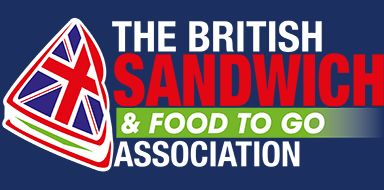The British Sandwich & Food to Go Association is advising businesses not to over react to the news this week that Out of Home foodservice businesses will in future be required to fully label products that are prepackaged for direct sale.
So far, the Government has only announced that it will be introducing legislation later this summer to require this and that there will then be a two year period before the requirements take effect.
Fortunately, there are already software programmes available that enable smaller businesses to produce labels with full ingredient information and which do not necessarily require investment in equipment as they operate with standard computers and printers. However, the application of labels will require input of data, staff time and training.
What is meant by Products Packaged for Direct Sale?
Essentially this covers any product that is packaged and put out for customers to pick up for themselves from a display. Those products bought in pre-packaged from third-party suppliers should already have full labelling on them, so this only applies to products that are made in-house by the business. Under current Government guidelines, this would include packaged sandwiches, meat pies, cakes etc. that are made by the business and sold in a pack.
The current guidelines are to be reviewed in consultation with us and other Stakeholders over the coming months. However, as a general rule of thumb, it is best to anticipate that anything in packaging for the consumer to pick up from a chiller or cabinet will need to be fully labelled.
What does Full Labelling Involve?
Under the current EU Food Information Regulations full labelling means that products have to comply with Article 9 (1) sections a-c of the Food Information for Consumers Regulations. This means the labels have to state:
- The name of the food
- A full list of ingredients – these have to be listed in weight order (heaviest at the top) and in some cases may need to show their percentage in relation to the overall product.
- Any allergens in the product must be emphasised (usually in bold type) in the ingredient list. There are currently 14 prescribed allergens which must be stated even if they are a component of another ingredient.
The current legislation also requires the name and address of the business as well as a date mark or use by date.
The exact requirements under this new legislation will be subject to discussions but the above is a guide to what is likely to be required.
The BSA has labelling guidance on its website setting out the requirements for full labelling of packaged products which is a useful guide to what is likely to be expected. This includes a list of the 14 prescribed allergens. You can find this here.
Allergen Responsibility?
Businesses will need to consider the implications of labelling specific allergens in situations where there is any risk of cross-contamination, as the fact of labelling puts greater responsibility on the operator for alerting consumers to risks. Indeed, there is concern that the specific requirement to state allergens in a particular product could mislead consumers with intolerances into thinking they are entirely safe without being aware of the cross-contamination risks.
Current law requires businesses to manage cross-contamination risks effectively. However, it recognises that where risk cannot be removed it is acceptable to communicate this to consumers. However, businesses doing this must be able to prove the dangers with a risk assessment.
In such circumstances, it may be appropriate to include a statement on labels about the allergens used by the business and that it cannot guarantee that traces will not get into products.
Our Advice
Our advice currently is to wait for further clarification of the requirements before acting.
Our Association will be pressing officials to clarify full details of the requirements over the coming weeks and would hope to be able to issue clear guidance by the Autumn.

